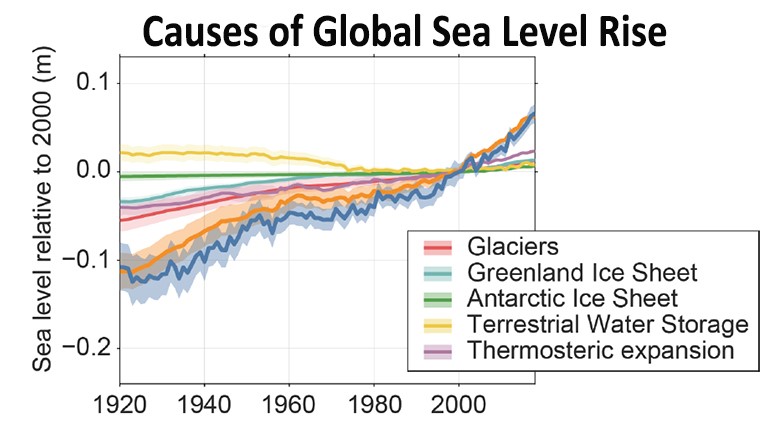The National Oceanic and Atmospheric Administration, or NOAA, routinely monitors sea level and makes predictions of how it will change with time. The observations are based on a combination of tide gauge data and satellite observations.
Continuously tracking how and why sea level is changing is an important part of informing plans for adaptation to global changes. In a recent speech, former President Donald Trump falsely stated that “the ocean will rise 1/8 of an inch over the next 200 to 300 years.”
In 2022, multiple agencies including NOAA, NASA, USGS, EPA, FEMA and DoD, issued a joint report that updated one published in 2017. The new report projects that sea levels along the U.S. coastline will rise an additional 10 to 12 inches by 2050, with specific amounts varying regionally. The prediction for increased sea level rise is a sustained response to the observed and continued global warming.

Between 1901 and 2018, the globally averaged sea level rose by 6 to 10 inches. The current rate of sea level rise is accelerating at almost twice the rate of the past 117 years. Sea level change can be affected by many factors; the current trend of increasing sea level results from global warming. As sea water temperatures increase, the water expands, contributing to the mean sea level rise. When temperatures rise, mountain glaciers and the polar ice caps melt, increasing the amount of water in the oceans.
The 2022 report also finds that the expected increase in sea level will create an increase in the frequency of coastal flooding, even in the absence of storms or heavy rainfall. By 2050, flood damage is expected to occur, on average, more than 10 times as often as it does today, and can be intensified by local factors.
Steve Ackerman and Jonathan Martin, professors in the UW-Madison department of atmospheric and oceanic sciences, are guests on WHA radio (970 AM) at 11:45 a.m. the last Monday of each month. Send them your questions at stevea@ssec.wisc.edu or jemarti1@wisc.edu.

